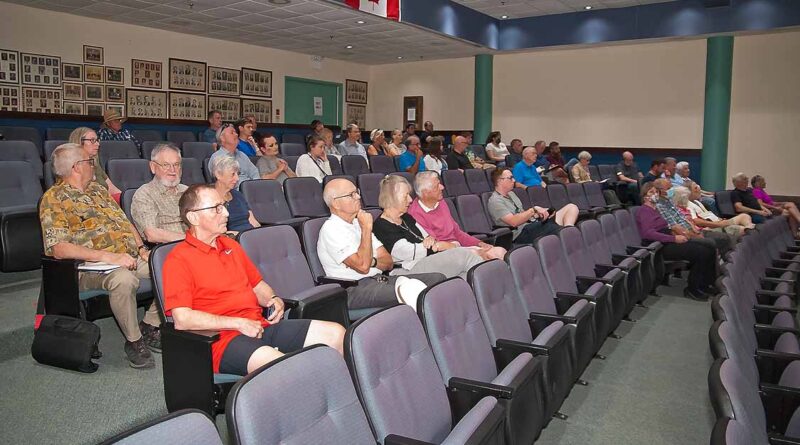Annexation Details Revealed
By John Swartz
Last week the City of Orillia had a public meeting in council chambers to present the findings of the technical evaluation and land needs assessment regarding expansion of City limits.
Approximately 70 people attended in person, some others online and three of the consultants from WSP and Hemson Consulting joined online.
The province forecasts the City will grow to a population of 49,000 by 2051 and because of requirements for land to build housing on and for commercial and industrial applications to accommodate that many people the City needs to expand its borders. The sticking point is employment land available for the population projected – Orillia does not have enough. The City’s infrastructure (water, sewer, etc.) can accommodate almost that many people.
The rules set by the province also won’t allow the City to just move the line without considering the quality of the land to become part of the City. Wetlands, watercourses, otherwise difficult to build on land and prime farmland are to be avoided.
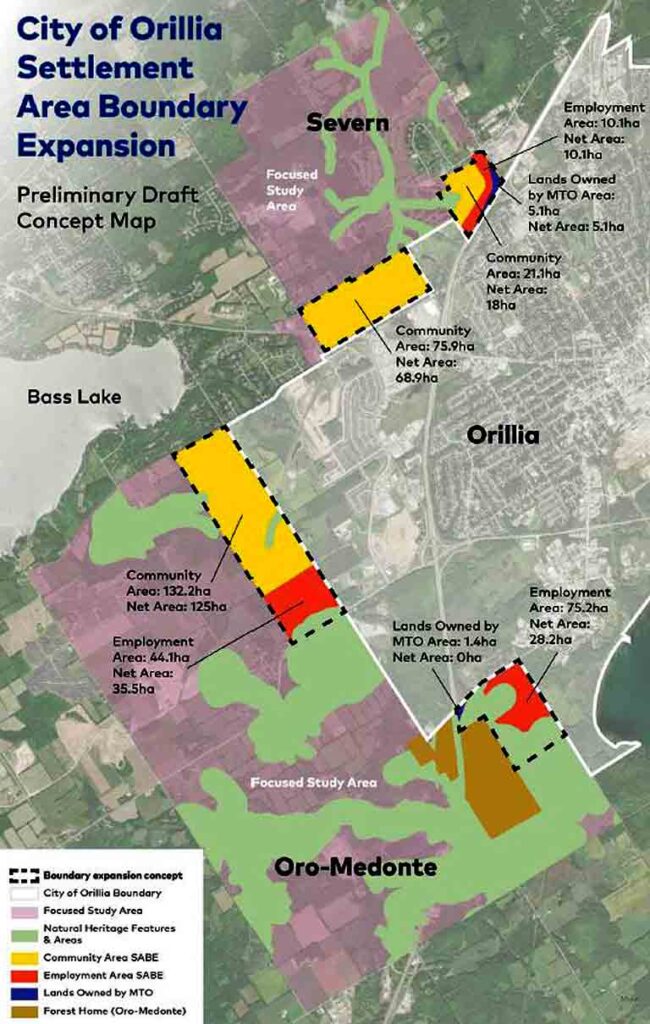
The original first take had huge parts of the three bordering townships earmarked, 14.5 thousand hectares. However Ramara was quickly dropped, presumably because there is only a few inches of soil on top of limestone bedrock in most of the area originally indicated. Building on that and would be expensive and unlikely to occur.
The area to be considered from Oro-Medonte and Severn Township was significantly reduced to 2,649 hectares once a more exact number of households and business/employment land needed for the increased population was calculated.
This was the second opportunity for the public to see what may happen and provide input. A third one will happen once the draft planning report is done.
In March a preliminary finding was presented to the City and council asked for calculations to be done again with higher intensification densities.
The consultants anticipated the City will grow in population by 1.2% annually and require 7,330 new homes and enough space to provide 1,560 jobs, plus land for schools and recreation facilities.
The consultants drew plans in steps ranging from providing that much new housing as if 50% would occur with multi-residential housing inside the current boundaries up to 69%. That would mean from 3,665 to 5,058 new homes (likely apartments, condos and townhouses) on land in the current boundary limits.
The point being made is higher intensification targets means less land needs to be annexed.
To achieve a 60% intensification target will mean only apartment buildings would be able to be built, while at lower levels there is room for some detached houses. To get higher densities only buildings greater than 8 stories would hit the mark.
For employment lands forecast to be needed, there already is enough to accommodate 755 jobs, so more land for 805 jobs is needed, or 49 hectares. Any land absorbed also needs to include 35 hectares for recreation.
The consultants identified land from Severn Township would be bounded by Burnside Line, Hurlwood Lane and Orillia’s boundary to the West (this includes the Island course at Hawk Ridge). A second Severn parcel is also included enclosed by the aforementioned Orillia boundary to the north, Fairgrounds Road and Murphy Roads. Land earmarked from Oro-Medonte is from an area bounded by Bass Lake Sideroad, Oro-Medonte Line 14 and Old Barrie Road, plus a 28 hectare parcel extending from Memorial Avenue on the north and Woodland Drive on the east, but not including Forest Home.
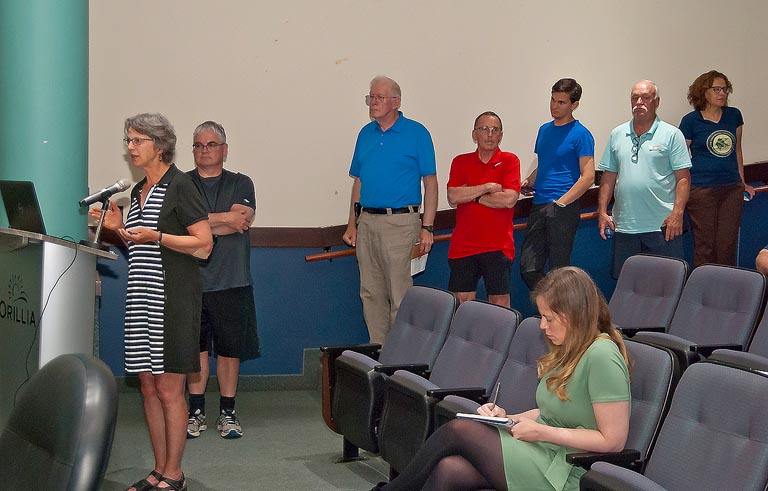
When time arrived for those in the audience to speak, the majority of those who spoke were not in favour of any expansion. Courtney Baker lives in Severn and expressed her displeasure to the consultants and Orillia senior planner Jill Lewis (who chaired the meeting).
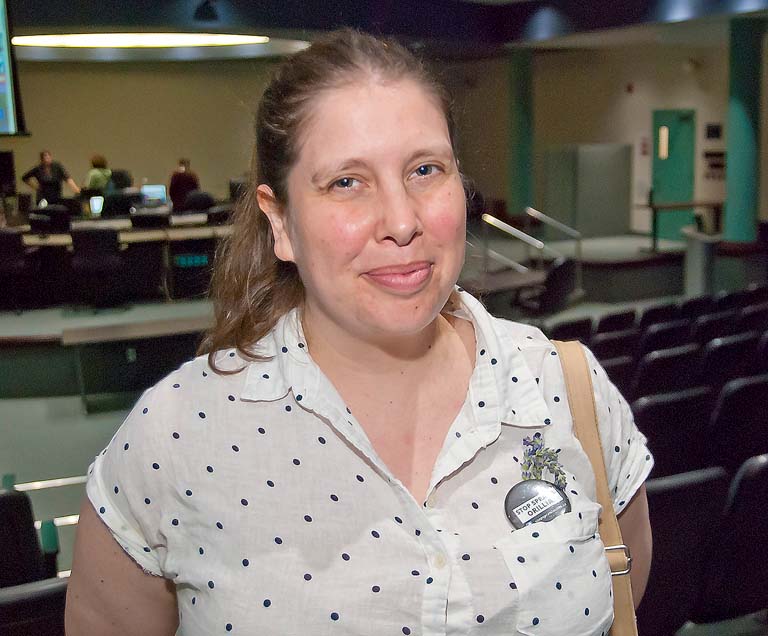
“I’m very happy to be a resident of Severn and I do not want to be a resident of Orillia,” She said. “I am my only friend who owns a home – at my age, and I feel very offended and very angry.” Her main concern was taking land to build on.
‘You want to take our wetlands, our greenlands, or trees, you better put dammed good thought into every quarter acre you want to take.”
“I am opposed to annexation because it’s lazy,” Baker told SUNonline/Orillia after the meeting adjourned, “because we don’t need to do it. Because the world is in a climate crisis and we desperately need all the green space we can get our hands on and stop developing it. We can build up instead of out and this is an exercise in the status quo, which is shameful at this point of 2023.”
Of course taxation, planning and zoning affecting her Telford Line property is a concern.
“That matters, but it doesn’t matter to me nearly as much as the importance of livable, walkable healthy cities. What matters far more is the future. The people that they are saying are worried about their house on Mortgage Hill not having a view of the lake anymore are not going to be the people living here in 2050. They say they want more sports fields, but when there are 30 days in a month over 30 degrees, who is going to be out there playing soccer?”
Others, like Orillia resident Bill Tinsley struck a tone acknowledging the inevitable, but offered suggestions to lower the effect on everyone.
“What I have to say doesn’t satisfy either of the groups that are stopping the sprawl or want very little intensification, but I do believe scenario 2 (55% intensification) is probably the one that’s going to go through and the reason I say that is because most Orillians are opposed to anything over 6 stories high. Scenario 2 protects that in terms of people living in Orillia,” Tinsley said. He thinks that’s achievable because his information from the City is that Orillia is ahead of targets to build more intensified housing during the last two years.
“It (scenario 2) protects the outlying areas and it actually is environmentally friendly to those areas because right now there’s actually bigger sprawl happening in the areas in Oro-Medonte and Severn because almost all of the buildup there is single family, large, estate dwellings. There’s a lot of development going on there. If the City takes over those areas, their (Orillia’s) infrastructure prevents things like septic tanks and things like that.,” Tinsley said.
Dorthea Hangaard, the executive director of the Couchiching Conservancy asked why no one contacted the conservancy for input before things got to this stage.
“We could have missed an email, but I’m just wondering if we could be consulted. We spent a considerable amount of time writing a strategy for this are and we’d like to share that with you,” she said to applause.
One of the consultants said they did not do targeted consultations and the conservancy was welcome to send their input in by July 17. Hangaard added more to her commentary.
“I’m also interested in more information on the 50% intensification in the built up area, what that scenario looks like when you map it out. I think a lot of us are struggling with it, how we actually evaluate how we’re going to develop the current footprint the City has?” she said.
Following the meeting SUNonline/Orillia spoke with municipal officials who were present as observers. Severn Mayor Mike Burkett doesn’t like the hand being dealt, but wants to play as best as he can.
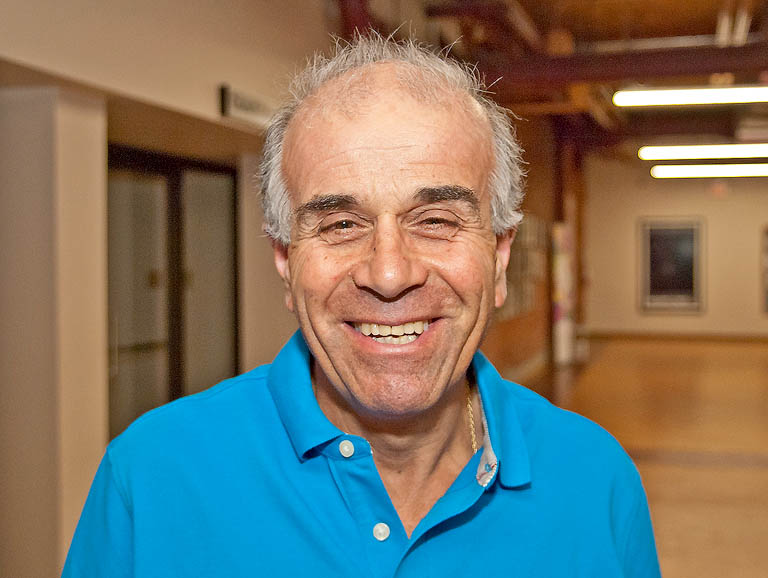
“I think the process; it’s not coming from the people of Orillia. It’s actually a request from the province. How are you going to grow in the next 30 years with the amount of new immigrants coming into Canada, the majority of them settling in the GTA , buying up homes and then people from the GTA moving north. In all good planning it’s something we all need to be conscious of. It’s unfortunate. I don’t want to give up any of our lands in Severn. That land is land that’s designated for Severn and Severn’s residents for growth,” Burkett said. He doesn’t think Severn has the ammunition to fight annexation.
“I’m sure we could, but do we really want to take that fight, because we would be fighting the province and we are no more than puppets of the province. We are there to do as they wish. I hate to say that, I’d love sit there and spend money and get lawyers involved and we can do that, but in the end who is going to win? We’re going to end up losing. I can’t see how we could win.”
“In all fairness, the previous council, Mayor Clarke was kind enough to include me in the discussion and as Hemson said, if you looked at that first slide and the amount of land they were looking at taking, they listened to my comments and they came back with a much smaller chunk of what they’re looking for.,” Burkett said.
Oro-Medonte councillor Richard Schell would lose part of his Ward 5 and said their council has not had any formal discussion, but he thinks annexation may not be necessary if Oro-Medonte and Orillia cooperate on growth that meets the needs of both.
“I can’t speak for the entire council, but it makes sense. We service that area already. We just built a brand new fire hall. Take that out of the equation it’s going to be a win-win for Orillia. The other side of the coin, if municipal services need to be extended, water and sewer into that area, we can share the cost,” said Schell.
Their new fire hall is closer to the subject lands than Orillia’s James Street station. He also said the province’s push for housing doesn’t match the rules the township has to play by.
“Is the government really trying to build more affordable housing? The gentleman earlier tonight, he’s right. We have a lot of development going on out in Oro-Medonte right now. That’s not affordable housing for the average person. The average person needs to have a home that’s affordable, have services and have bus routes to be able to get to and from work without having to drive everywhere.”
Orillia councillor Dave Campbell was present but declined to comment. He said as an employee of Severn Township he’s going to declare a conflict on the entire matter. Councillor Jeff Czetwerzuk sees a lot of homework in his future.
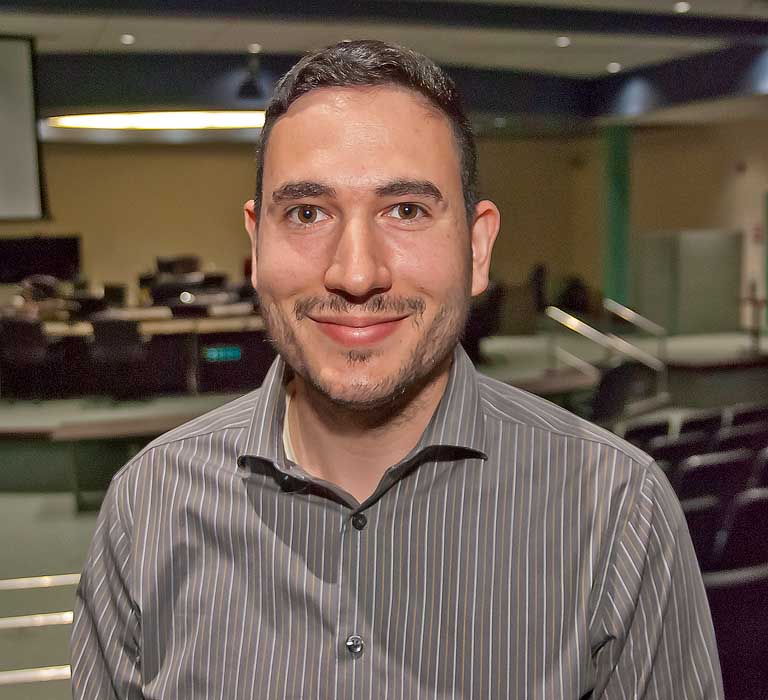
“We’ve already got a lot of feedback from the community, so we’ll take that into account. There’s a lot of technical land evaluations, studies and I need to do my due diligence. I need to look at everything. I need to look at all the information we have and have that inform the decisions,” he said. He also said Orillia had intensified development before and we can do it again.
“The downtown Orillia is the most beautiful part of Orillia, currently that some people will argue, and it’s considered medium density. There are shops on the bottom and housing on top. If Orillia did it right that many years ago, why can’t Orillia do it right now?”
You can view documents related to the process online, and if you have comments to make in writing to planning@orillia.ca by Monday, July 17.
(Photos by Swartz – SUNonline/Orillia; Images Supplied)

